After a very nice touring of Trang An landscape, we returned to Tam Coc, had lunch and then went back to our homestay where again we took bikes and headed for the Bird Valley. This time we were not full of enthusiasm, since we were a little tired of trying to manage the bikes, which were not too bad, but far from optimal. Still, we covered some 7-8 km and reached the Natural Bird Park Thung Nham. We bought tickets at the entrance into the park, but from there the road went uphill and we had to push the bikes. On the other hand, it was a lot of fun going down on the other side of the elevation.
Thus we got to a place in which there was a very elegant resort that was still being finished, but it appeared very attractive for a quiet summer vacation. There we left the asphalt road and following a broad pebble path headed for the Bird Valley, riding the bikes beside a small river or perhaps it was just a narrow stretch of a lake or a pond. Then the path came to its end, we parked and locked the bikes, and walking over some rocks following a hiking trail we continued along the water and then a little uphill to a viewpoint. It was absolutely worth it.
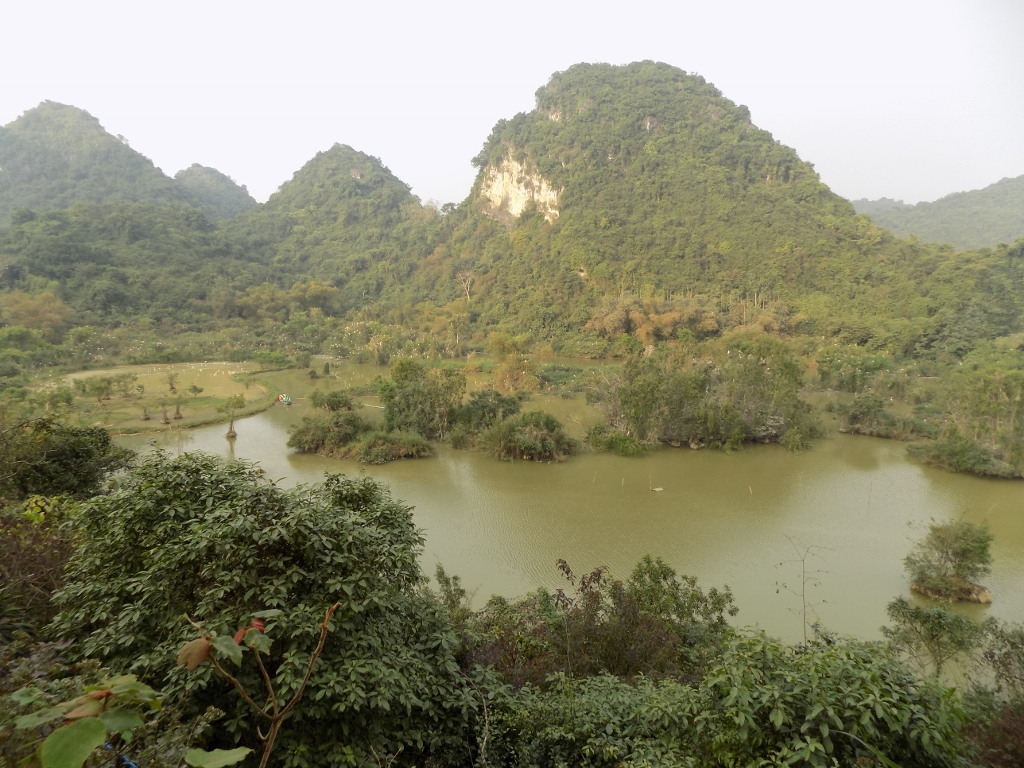 Natural Bird Park Thung Nham
Natural Bird Park Thung Nham
The landlady of the homestay we slept at told us we should not get here before 4.30 pm, because that was the time when birds congregated to spend the night here and so they did. Since that section is tucked away between hills, with enough water and trees, birds obviously like to come here for the night. We really enjoyed! As far as I could see, there were storks, grey herons and cattle egret.
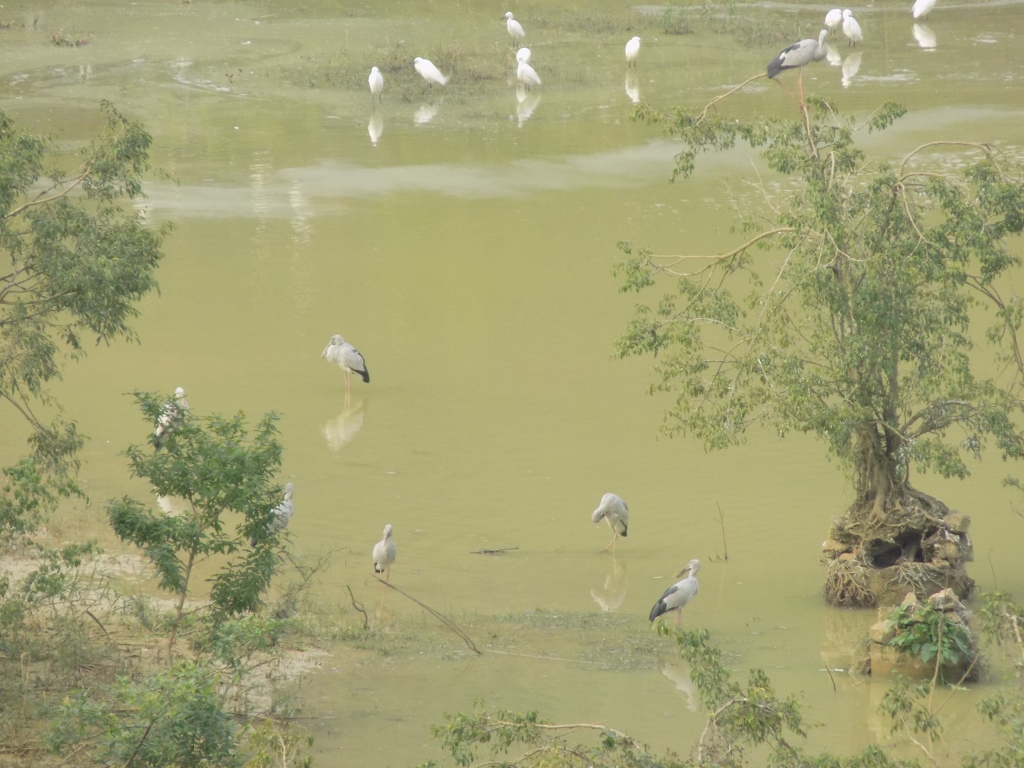 Natural Bird Park Thung Nham
Natural Bird Park Thung Nham
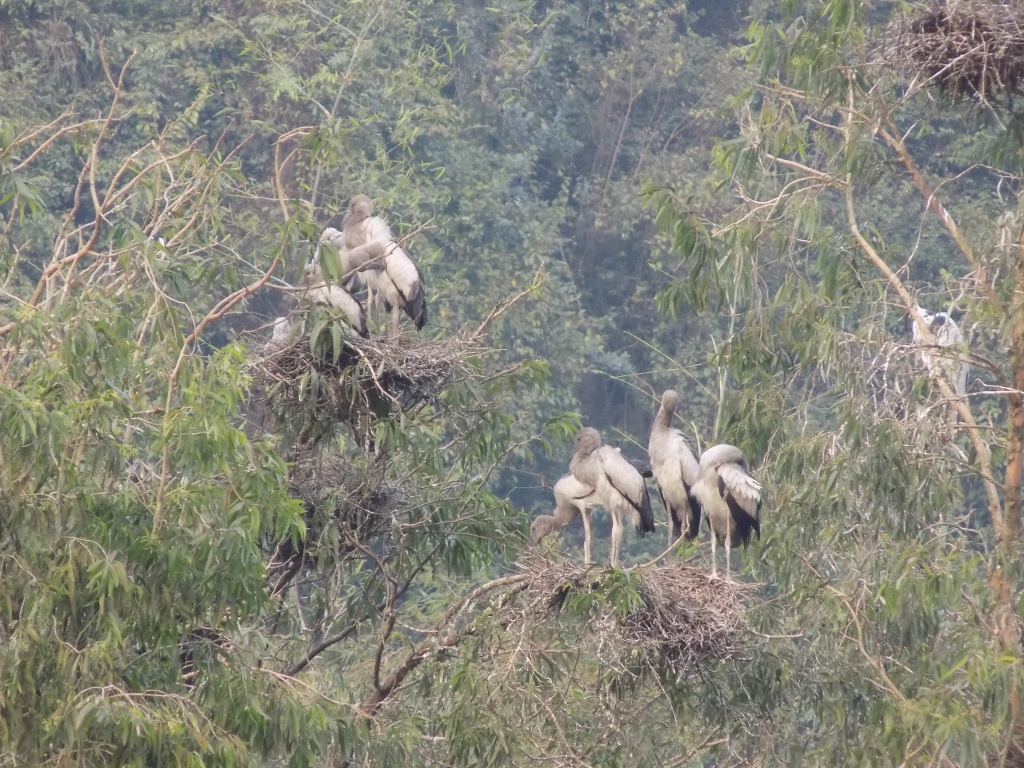 Natural Bird Park Thung Nham
Natural Bird Park Thung Nham
The return was strenuous, because other than wanting to make it before the night we had no other motive. Still, I could not resist, so I stopped occasionally to take photos, while at the same time enjoying the welcome break from pedalling.
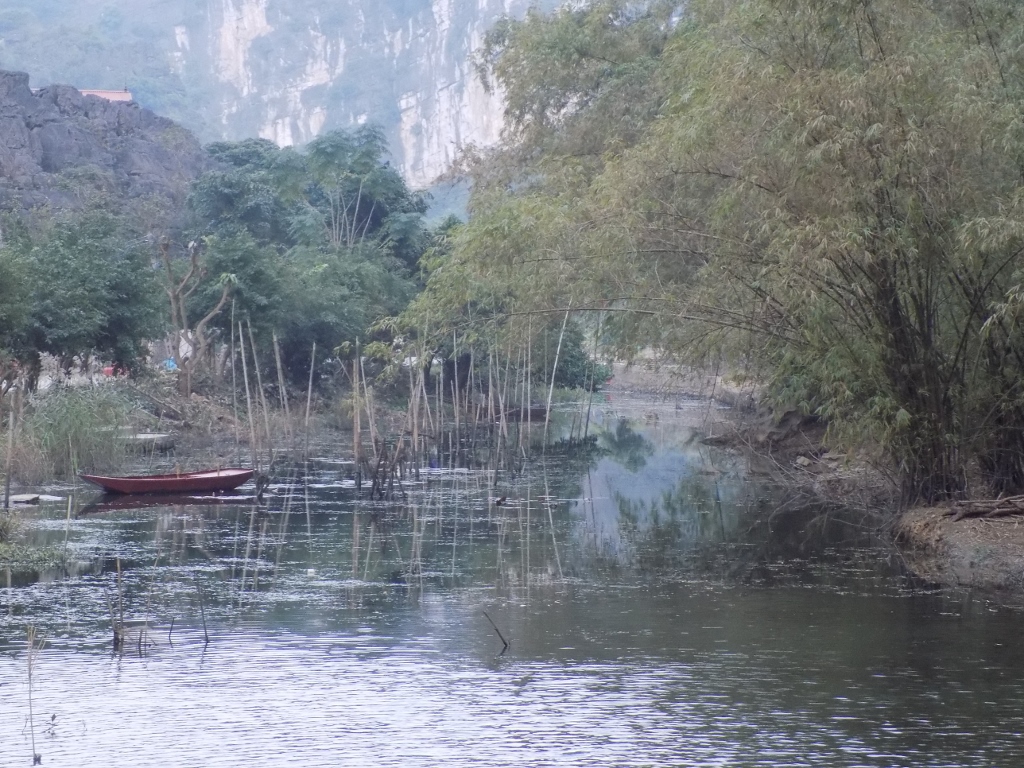 On our way back to Tam Coc
On our way back to Tam Coc
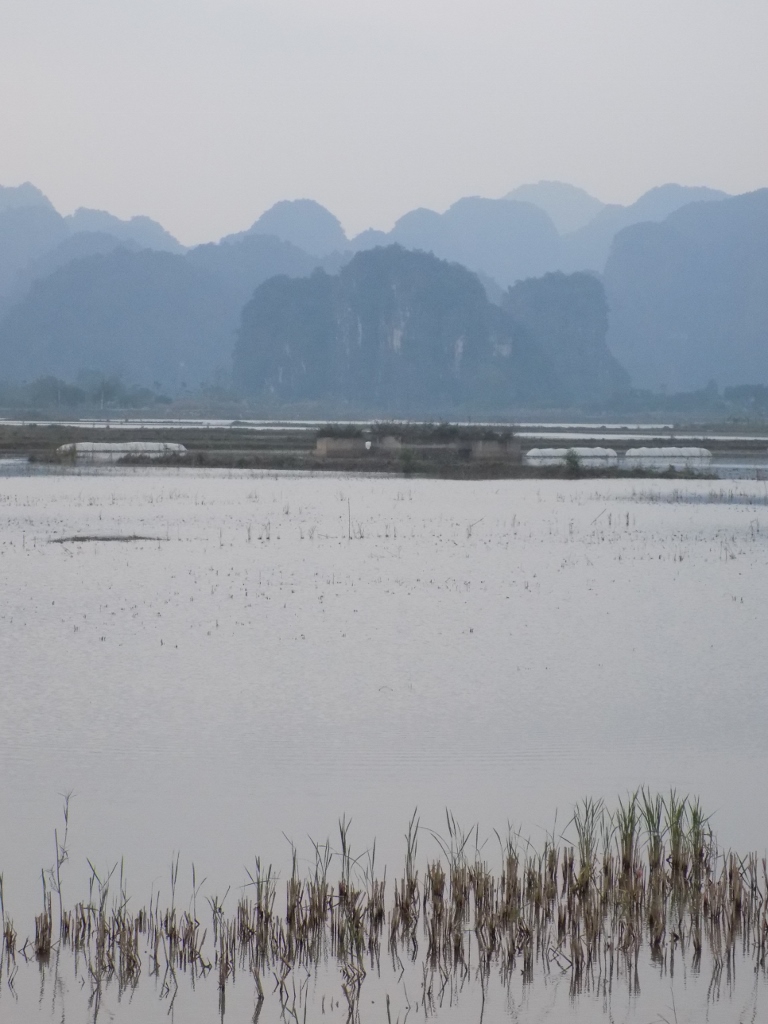 Famous landscapes around Tam Coc
Famous landscapes around Tam Coc
Other than the beautiful landscapes, along the way we also saw a large number of rice paddies covered in water and waiting for the right season for the rice to be planted in them. On the other hand, the young green rice seedlings could already be seen in plastic greenhouses waiting to be used.
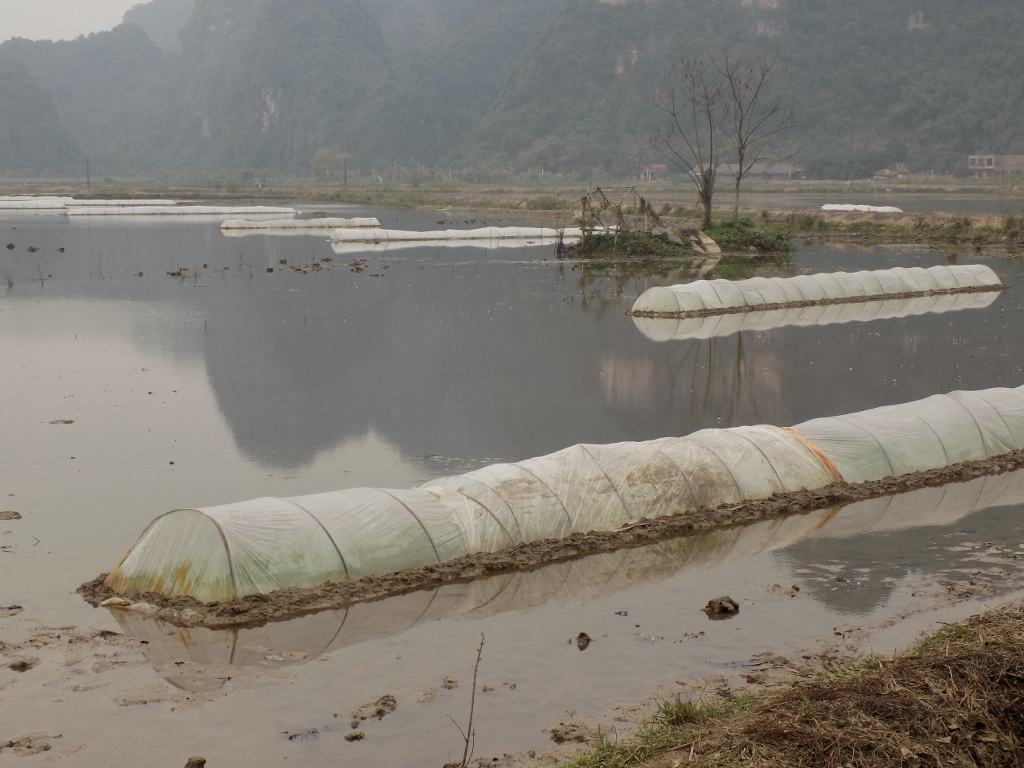 A rice paddy on the way to Tam Coc
A rice paddy on the way to Tam Coc
The next morning we left Tam Coc early, since we had a southbound train to catch in Ninh Binh. Since the journey took long and I didn’t have much to do, I watched people around me.
During our journey, we kept seeing a lot of people, mostly women, wearing masks. Not surgical, but specially made fabric masks that have an extension in front of the mouth. I could understand it why they were wearing them while riding motorbikes – possible pollution, dust, etc. – but I absolutely could not fathom why they wear them for several hours, for instance on a train with air-conditioning and closed windows and no perceptible strange smell. None of the people I spoke with could provide me with a meaningful answer. On the other hand, it seems as if they are doing this in order to protect their health, but I do wonder how healthy it is to reduce oxygen supply and keep inhaling the air through fabric that has been saturated with microbes and all sorts of things both from the inside and the outside.
While observing my fellow passengers, I got an impression that the Vietnamese are particularly sensitive to different smells which they find unpleasant and that they use some quite ingenious means to alleviate the negative olfactory impact. For instance, I saw a woman on the train who kept a mandarin peel over her nose for almost two hours. I guess she likes citruses. On the other hand, when at some point somebody spilt some kind of rice brandy on the train from Ninh Binh to Dong Hoi (I presume it was some kind of rice brandy, since in addition to the basic smell there was also that of alcohol), the girl sitting next to us simply tore off a piece of bread and stuck it to her nose, previously frowning at the smell which she obviously did not like at all.
Also, I found it interesting that in the train, on the monitors used for films, entertainment programmes and music spots, at one point they showed a brief spot that seemed like an ad and its message in the end was “you cannot impress anybody with a rhino horn” (the original was in Vietnamese, of course, but with English subtitles) followed by messages saying rhino horn trade was illegal and proving telephone numbers on which people may report those who use or trade with rhino horns. So, it is not only the Chinese on account of whom these poor animals are massacred. Obviously, there are also enough impotent and desperate men in Vietnam as well.
As we were passing by some mountains travelling south, the landscapes started to change, meaning that at first I only saw some women planting rice, but soon after I also noticed fields covered in light-green fresh young plants. Together with the partially blue sky and the sun that appeared from time to time, it was enough for me to feel refreshed and ready for new sightseeing. From the train station in Dong Hoi we transferred to the village of Son Trach where we only had the time for dinner since we arrived late (the train took 8.5 hours). Needless to say, it was overcast again the next morning, but that certainly did not impact the events and our enjoying in the sights we were exposed to that day.
The reason why we came to Son Trach was to visit the Phong Nha-Ke Bang National Park. It contains a very high level of biodiversity and many endemic species live there. In addition, it also features large geological diversity, including numerous caves and underground rivers. Moreover, it is the place where the biggest known cave in the world is located, but we did not plan to visit it. The reason is very simple. In order to visit Son Đoong cave, it is necessary to go on a 7-day tour which costs around 3000 USD. Still, even with this, there is a waiting list and the first free spots are in more than a year, primarily because the number of visitors is very limited – only around 800 a year. So, we hadn’t even planned on going on this trip, plus there was no particular need for that, since there is a large number of other, also big caves in this national park, with a note that not all of them are earmarked for tourist visits nor can tourists necessarily visit them in all their length.
The trip we did decide on started by a mini-bus picking us up and transferring us together with some other tourists to the Botanical Garden. The guide told us right away that it was a bad time of the year for seeing much at the garden, but the point of going there was in fact to walk over to a waterfall. She also told us we would see some animals. Namely, due to the famous exceptional biodiversity at this national park, I guess the park managers and some tourist organization feel obliged to provide tourists even with a glimpse of some exotic animals and therefore very close to the entrance into the Botanical Garden there is a large fenced space in which we could see some monkeys.
The guide started telling us that this is where they keep baby monkeys until they grow and then they can leave freely going into the rainforest. In your dreams! What nonsense for tourists. First and foremost, these little monkeys were not particularly small to be babies, but rather seemed like adults of a smaller species. After all, orang-utans certainly don’t live here, and gorillas and chimpanzees even less. On the other hand, the fence of this space was made of wire, but there were also rows of electric barbed wire on the top that were turned inwards! Third, once monkeys get used to being regularly fed (right upon our arrival, the guide asked if any of us had bananas), it is difficult that the monkeys will decide on their own initiative to move to the rainforest full of uncertainly. And fourth, I did not get an impression that there was anybody playing a surrogate mother and if they don’t have one, how will they learn on their own how to feed themselves in the forest?
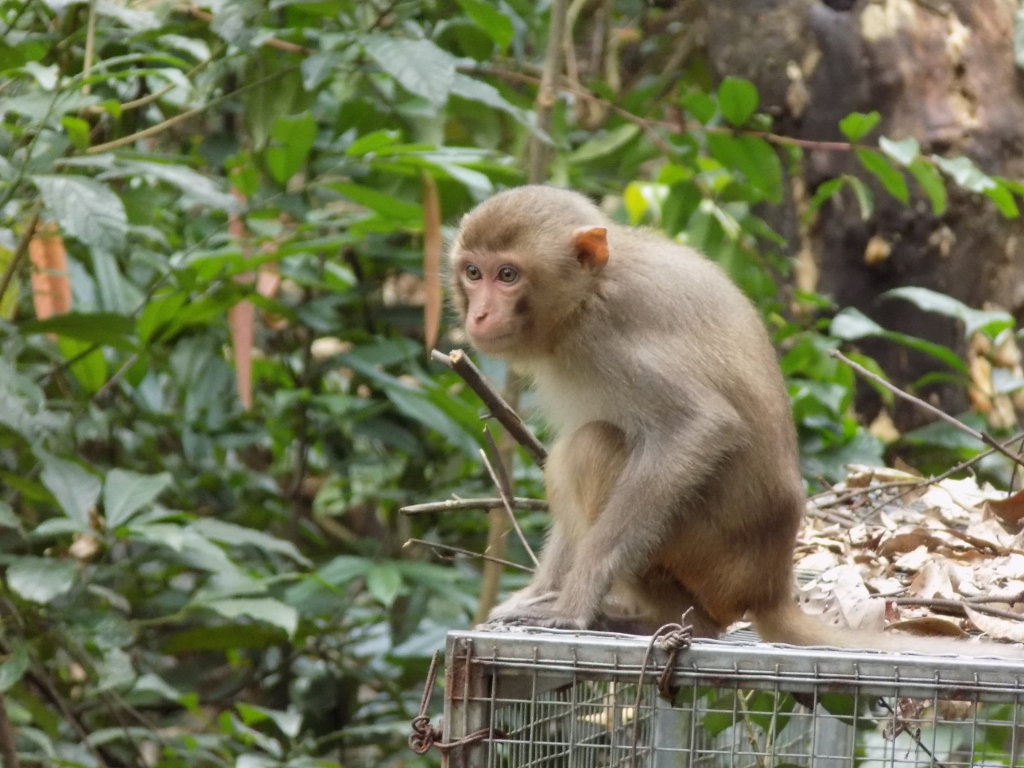 Poor little monkey at the Botanical Garden in the Phong Nha-Ke Bang NP
Poor little monkey at the Botanical Garden in the Phong Nha-Ke Bang NP
I think that the whole installation was placed there in order for the tourists to take photos and then go back home and recount how they met wild beasts. For instance, in one of the cages next to the space with monkeys, approximately 2 m by 5 m, there was a large and fat python, as well as an unsuspecting white duck. The guide told us about how great friends they are, only the management needs to put in a new duck every couple of months. She also added that the management do not put in chicken since they are fast and then the (poor) python would have to strain itself. This way it spends its life lying in the cage and getting fatter eating slow ducks that do not offer any resistance, I guess, thinking that friendship will prevail.
The guide also told us that there are tigers in the forest and that once they ran onto one that was only some 10 metres away from her and her group of tourists, but then they bent down and kept quiet. My conclusion: in addition to ducks, the tourists coming to this national park are also extremely gullible. What I want to say with all of this is that this whole story with “wild beasts” in the middle of a botanical garden was just too much.
Although we were in the Botanical Garden, we only rushed by some marked plants and just as Sneza commented they had apparently only placed the info board saying it was a botanical garden, since other things seemed to be more interesting there. I fully agree. These marked floral specimens were all just young saplings planted in between some larger trees that grow there anyway. But let me stop with the things I did not like, for there were many things that day that I really liked, even loved, and that kept me breathless.
So, while still at the Botanical Garden we got to a beautiful waterfall and there we carefully descended down some side rocks, often holding on to the installed rope or rocks themselves, or most often on to both. The waterfall and surroundings were really pretty from every angle – when looked at from above, or from the side, or from below. We went down on the one side, then crossed the stream over some large boulders, went down a little bit more and then climbed back up to the basic level. The climbing on the other side of the waterfall seemed less dangerous, but was nonetheless strenuous because of the steep ascent. It was still a very nice experience and I became so hot that for the first time in two weeks in Vietnam I was only in my sleeveless shirt.
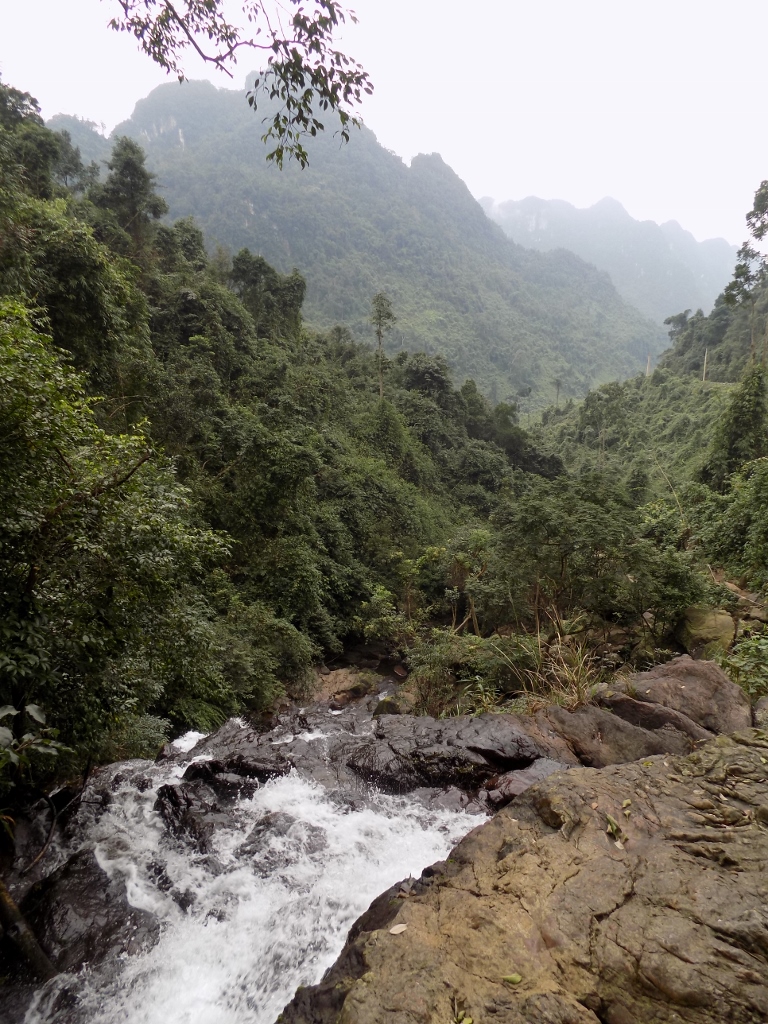 Beginning of the waterfall at the Botanical Garden in the Phong Nha-Ke Bang NP
Beginning of the waterfall at the Botanical Garden in the Phong Nha-Ke Bang NP
And then we went to paradise – or rather to the Paradise Cave. But, more about it next time. For the time being, just one peek...
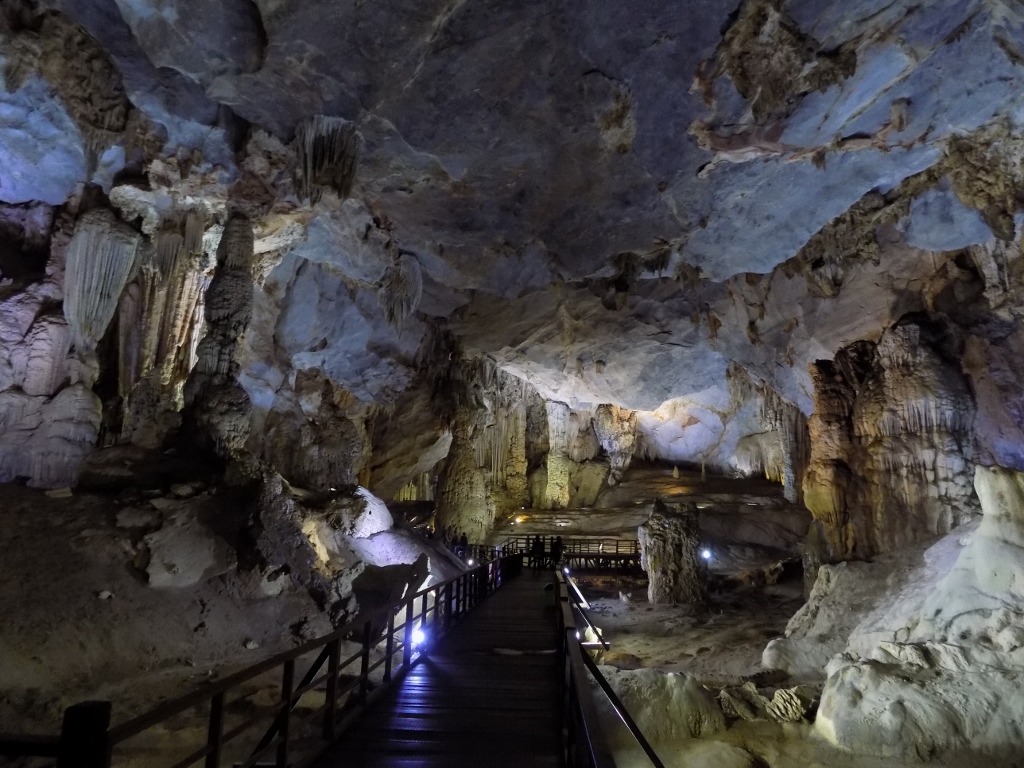 Paradise Cave at the Phong Nha-Ke Bang NP
Paradise Cave at the Phong Nha-Ke Bang NP